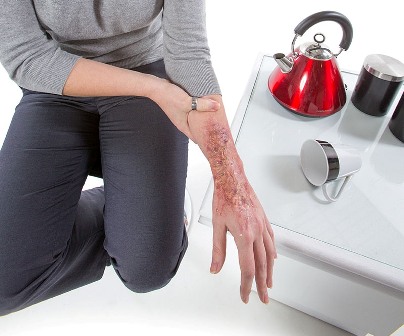How to Treat Burns and Scalds
Date: Thursday, 20 August 2015. -
Blog, First Aid

When life gives you lemons, make lemonade. You have to make the best of a bad situation and that’s where we come in. We want to make sure that you are prepared for such mishaps so that you can take action and hopefully prevent the injured area from getting any worse.
Get ready to make a mental note of these pearls of wisdom, on how to treat burns and scalds- because you never know when you might need them.
- If you experience a burn or scald, run the injured area under cold tap water for at least 10 minutes.
- Remove any jewellery from the injured area before the skin starts to swell.
- Cover the burnt area with cling film or a non-fluffy sterile dressing.
- Do not. I repeat do not burst blisters because it may lead to infection.
- Do not attempt to remove clothing that’s stuck to the skin.
- Do not apply any lotions, creams or ointments as they may damage the skin and lead to infection.
It is also important to recognise when a burn or scald should be treated in hospital, for example in the first scenario mentioned in this post, the small burn from the curling wand could easily be treated at home. However, the scald mentioned in the second scenario could be much worse. The extent of the burn could cover a large area and the gentleman's clothing could now be stuck to his legs.
You should go to hospital with a burn or scald if:
- The injured area is a full thickness burn- distinguished by white charred looking skin.
- The burn covers an area larger than your hand.
- The partial burn is on sensitive areas that blister such as hands, feet and genitals.
- The burn is electrical or chemical related.
- The affected person is a child or pregnant.
For more step-by-step guides on how to treat a number of injuries and conditions download our first aid app, it’s completely free. Just search for Imperative Training in your app store to gain access to first aid guidance when you're on the go.
